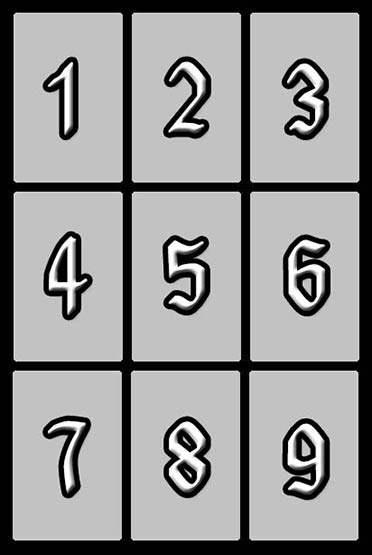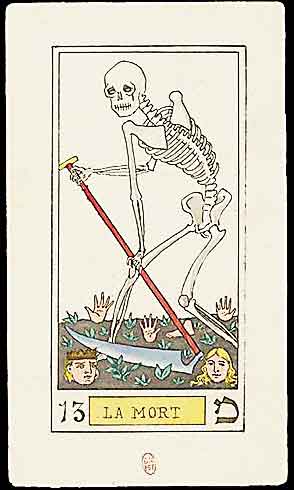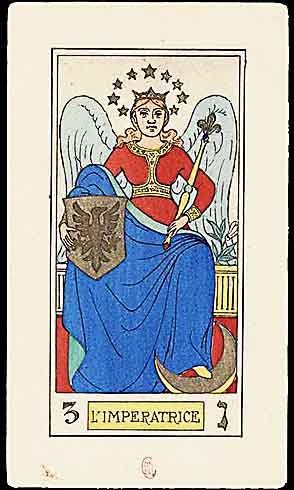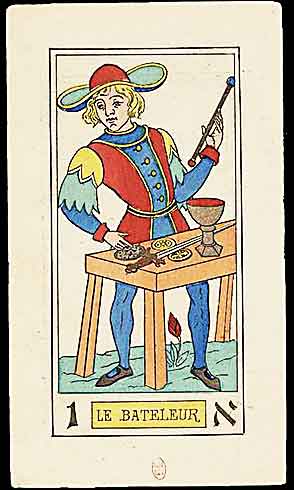Comic Strip Spread

Difficulty: Easy
Note: This spread works best with decks like the Diary of a Broken Soul or Surrealist Tarot because they display scenes rather than pips and do not use reversals.
The Comic Strip Spread is a simple nine-card chronological spread that looks like a page of a comic book. This method should be used to get a glimpse of the future as it would pan out naturally. It may be insightful to use this spread in coordination with biorhythms. The spread is easy to read as a storyboard, just like a comic strip.
The main subject is apparent in the first card, while the story plays out through the following tarot cards.
It is important to pay particular attention to the cards and the relationships with their neighbours. Notice which directions the cards are facing, and how they interact.
Your Comic Strip Reading
XIII – Death |
V – The Pope |
III – The Empress |
I – The Magician |
XVI – The Tower |
XXI – The World |
XV – The Devil |
XI – Strength |
II – The High Priestess |

Card 1: XIII – Death
Death signifies transformation, endings, and new beginnings. Rather than literal death, it represents the end of a phase in life, making way for rebirth and regeneration.
Symbolism: Death is portrayed as a skeleton reaping the harvest with a scythe, signifying purification and the promise of growth. Parts of the fallen lie before them, representing what must be left behind for transformation to occur. The card's imagery reminds us that change is inevitable.
In Relationships: An ending or significant change, clearing the way for fresh developments or perspectives.
In Work: The end of a project, job, or phase of life, leading to the start of something new and transformative.
Spiritually: A transformative time where old beliefs or habits must be released for personal growth.
When ill-dignified: Resistance to change, stagnation, or fear of transformation.

Card 2: V – The Pope
The Pope represents tradition, spiritual guidance, and morality. He symbolises the need for structure, passing sacred knowledge, and alignment with established systems or mentors.
Symbolism: Seated on a throne with a triple-cross sceptre and a raised hand in blessing, the Pope embodies divine wisdom. The twin pillars behind him suggest the gateway to higher knowledge and understanding.
In Relationships: A traditional, committed relationship or the need to realign with moral principles.
In Work: Seek guidance from a mentor or adhere to established structures for success.
Spiritually: The Pope calls for a return to faith, ethics, and divine wisdom in all aspects of life.
When ill-dignified: Dogmatism, hypocrisy, or blind adherence to outdated traditions.

Card 3: III – The Empress
The Empress embodies creativity, fertility, and nurturing energy. She symbolises the fruitful aspects of life, from creativity to personal growth, and encourages abundance in all forms.
Symbolism: Adorned with a crown of stars, she sits in a lush, fertile garden, holding a sceptre and shield. These symbols signify both authority and protection. The crescent moon beneath her feet connects her to cycles of intuition and growth.
In Relationships: Nurturing love, emotional bonds, or the creation of something new in a relationship, such as a family.
In Work: Success in creative ventures, productive work, and harmony.
Spiritually: Connection with natural and cosmic cycles, alignment with divine timing.
When ill-dignified: Stagnation, overindulgence, or the misuse of creative energy.

Card 4: I – The Magician
The Magician signifies mastery, skill, and the power to shape reality. This card represents harnessing resources and directing one's energies towards success. The Magician embodies the potential to manifest desires into tangible form.
Symbolism: He stands before a table with tools representing the four elements: a cup (Water), a sword (Air), a coin (Earth), and a wand (Fire). His raised wand symbolises the connection between spirit and matter, and his hat, shaped like an infinity symbol, signifies endless potential.
In Relationships: A time to use charm, wit, and initiative to build or strengthen relationships.
In Work: Opportunity, success, and the power to manifest goals through skill and action.
Spiritually: The Magician teaches the importance of intention, focus, and using one's talents for higher purposes.
When ill-dignified: Deception, manipulation, or scattered energy. Warning against using one's power for selfish gain.

Card 5: XVI – The Tower
The Tower signifies sudden upheaval, revelation, and the breaking down of false structures. This card represents moments of crisis or dramatic change that lead to profound transformation.
Symbolism: The Tower is struck by lightning, causing it to collapse. Figures fall from the tower, symbolising the suddenness and unexpected nature of the event. The crown-like top falling from the tower suggests that pride or false beliefs are being shattered.
In Relationships: A sudden revelation or event that shatters illusions, leading to change or the breakdown of a relationship.
In Work: Unexpected disruption, the destruction of old structures, or a breakdown of outdated systems.
Spiritually: A wake-up call that challenges beliefs or systems, leading to greater clarity and spiritual growth.
When ill-dignified: Crisis, destruction without transformation, or a refusal to accept change.

Card 6: XXI – The World
The World represents completion, fulfilment, and the achievement of wholeness. This card signifies the end of a cycle and the successful realisation of goals and aspirations.
Symbolism: The World features a figure dancing within a wreath, holding two wands. The four corners of the card show the symbols of the fixed signs of the zodiac: the bull, lion, eagle, and man, representing the harmony of the four elements and the completion of the journey.
In Relationships: Harmony, fulfilment, and the completion of a phase of a relationship. The achievement of mutual understanding and goals.
In Work: The successful completion of a project or phase, leading to accomplishment and new beginnings.
Spiritually: The attainment of wholeness, completion, and the alignment of the self with the universe.
When ill-dignified: Complacency, stagnation, or the inability to move forward despite opportunities for growth.

Card 7: XV – The Devil
The Devil represents temptation, materialism, and the enslavement of desires. It points to the darker aspects of the self, where one is bound by addictions, fears, or unhealthy attachments.
Symbolism: The Devil is depicted as a horned figure with a monstrous appearance, standing over two chained figures. The chains are loose, indicating that freedom is possible, but the figures are unaware of their power to escape. The card represents self-imposed limitations.
In Relationships: Unhealthy attachments, temptation, or toxic relationships. A call to break free from negative patterns.
In Work: Materialism, greed, or feeling trapped in a situation. The need to release limiting behaviours.
Spiritually: The need to confront personal fears, addictions, or attachments that block spiritual growth.
When ill-dignified: Excess, obsession, or being enslaved by negative influences or desires.

Card 8: XI – Strength
Strength symbolises inner strength, courage, and emotional mastery. It represents the power of compassion and grace in overcoming challenges, rather than brute force.
Symbolism: A woman calmly subdues a lion, symbolising the triumph of inner strength over raw power. Her serene expression and gentle hands show mastery through patience and understanding.
In Relationships: Strength to overcome emotional challenges through understanding and patience.
In Work: Success through resilience, determination, and tact, not through force.
Spiritually: Mastery of inner impulses and alignment with higher virtues.
When ill-dignified: Weakness, impatience, or misuse of power in challenging situations.

Card 9: II – The High Priestess
The High Priestess represents intuition, wisdom, and hidden knowledge. She invites introspection and reminds us to trust our inner voice in uncovering truths that are not immediately apparent.
Symbolism: Seated on a throne with a book of wisdom and keys, the High Priestess represents access to esoteric knowledge. The curtains behind her suggest mystery and the boundary between the conscious and unconscious realms.
In Relationships: Emotional depth, secrets, or a need for patience and understanding.
In Work: Hidden opportunities, deep research, or learning emerging from within.
Spiritually: Trust your intuition and explore spiritual truths beyond the material world.
When ill-dignified: Ignorance, repressed emotions, or manipulation behind the veil of mystery.